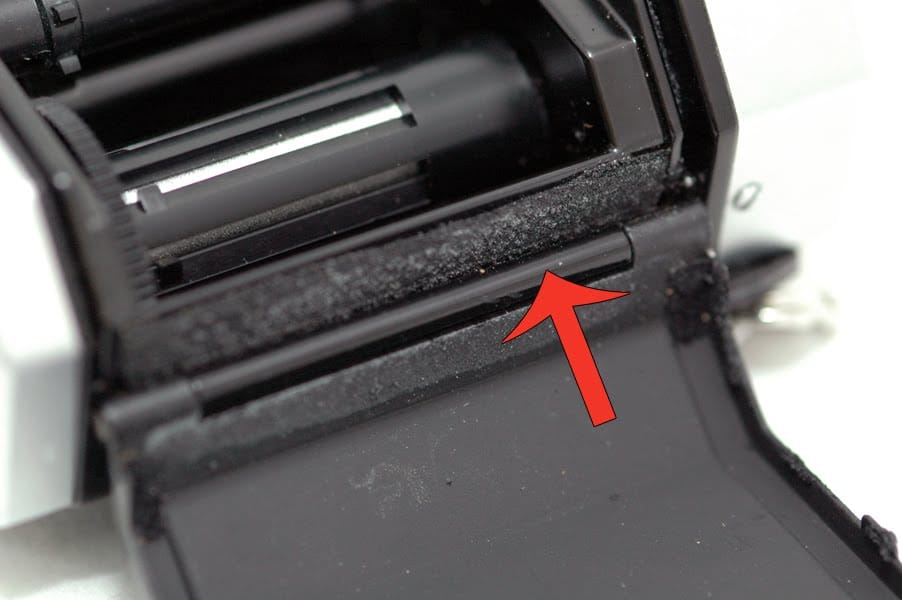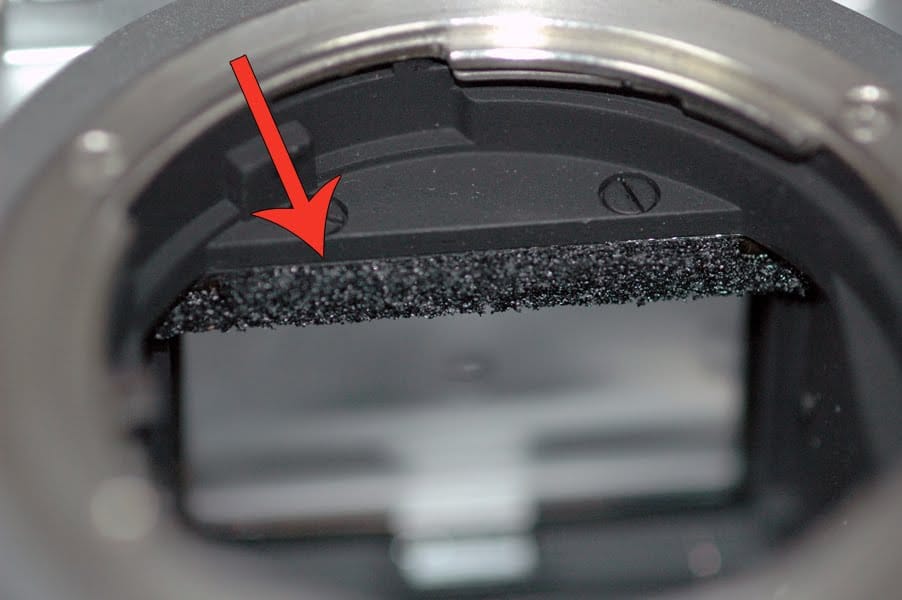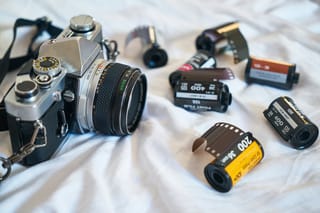
There are a few different issues that can cause light leaks. If you’re unfamiliar with what a light leak is, it is basically a space on the camera that allows light to “leak” into the inside and therefor over exposing the film. It will sometimes cause a white or red area on the film/print that shouldn’t be there. If the leak is bad enough, it can fog your entire image.
One of the main causes of light leaks is bad light seals. In most 35mm and medium format camera, the seals are made up of a foam padding. The foam deteriorates over time. Foam is typically found around the entire back door of the camera, above the mirror, and around the focusing screen and prism (in cameras with detachable prism housings). In some cases, the foam may have been replaced by a rope type seal, which holds up better over time.
To check and make sure your foam is still good, it’s simply a matter of stickiness and/or brittleness. First, check to see if the foam padding is still there. Then answer these questions: Is there little black specks falling out from the inside of the camera? Does the foam look moldy? Is there a sticky black substance around the edge of the door? If you answered yes to any of those, then your foam is bad. Having the foam replaced is a fairly inexpensive job, and can be done at most camera repair shops. The red lines indicate where light can seep in through. Around the perimeter of the camera back, there should be a solid strip of foam. The shutter blades in the middle may also cause exposure issues if they are broken.
The red lines indicate where light can seep in through. Around the perimeter of the camera back, there should be a solid strip of foam. The shutter blades in the middle may also cause exposure issues if they are broken.
 Foam padding at the hinge of the back door to a 35mm. This foam is bad, as it has some mold on the surface, is flaking away, one strip is missing, and is starting to stick.
Foam padding at the hinge of the back door to a 35mm. This foam is bad, as it has some mold on the surface, is flaking away, one strip is missing, and is starting to stick. Foam pad in lens mount above mirror
Foam pad in lens mount above mirror
The only case in which a light leak is usually wanted, is when shooting with a Holga.
It’s a good idea to check these things on a fairly regular basis, and super important to check if you’ve had the equipment sitting around for while, especially if it’s been stored in a garage or attic. The temperatures and weather conditions cause the equipment components to break down must faster than if it were properly stored.




